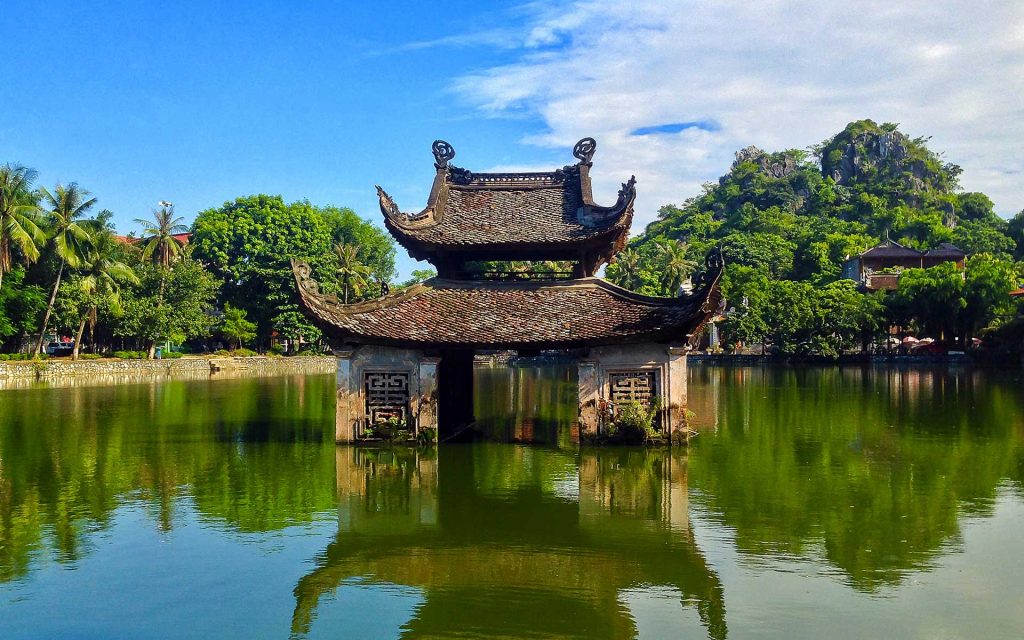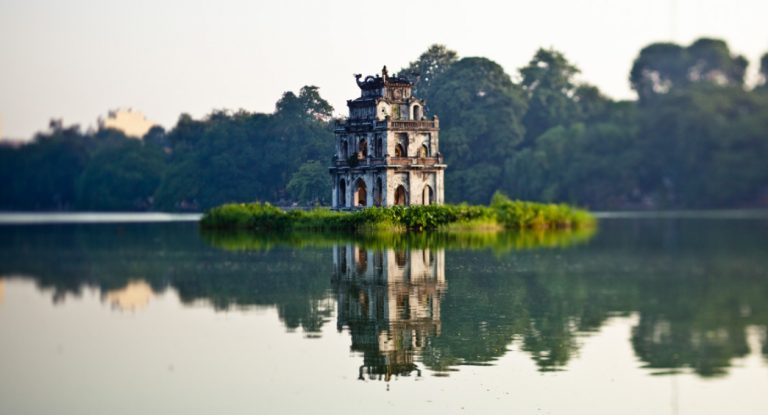Thay Pagoda – Hanoi
Thay Pagoda (Chua Thay means Master Tu Dao Hanh’s Pagoda) had another old name: Huong Hai (Sea of Perfume), So De. According to historical records, the official name is Thien Phuc Tu (Pagoda of Celestial Bliss).
History of Thay Pagoda

According to legend, friar Tu Dao Hanh used to live here as an ascetic. The first structure was built in the Xlth century. In the 15th century, it was rebuilt. The pagoda is located 30 kilometers from Hanoi at the foot of Mount Thay (or Sai Son, Son Tay), which has numerous grottos. In front of it is Long Thieu Lake, which has a pavilion in the center designed for water puppets. Dr. Phung Khac Khoan (1528 – 1613) constructed two covered bridges in 1602. The one on the left (Nhat Tien) overlooks the Tam Phu Taoist shrine, which is located on an islet, while the one on the right (Nguyet Tien) leads to the mountain’s upper pagoda.
The architecture of Thay Pagoda
Thay Pagoda is not only fascinating because of the stories, but also because of its ancient architecture and natural beauty of mountains and caves. The ideal balance of the local landscapes and Vietnamese classical architecture will calm and astound you.
The pagoda was constructed on a dragon-shaped plot of land, according to feng-shui theory. Long Dau mountain is to the left of the pagoda, Long Dau mountain is to the rear of the pagoda, and Sai Son mountain is to the west. The pagoda is oriented south. Between Sai Son and Long Dau, in front of the pagoda, is a huge lake called Long Chieu or Long Tri (Dragon Pond) and a wide yard shaped like the dragon’s jaw. As the sparkling jewel lies in the center of the dragon’s mouth, you can see Thuy Dinh – the oldest water house for the popular water puppet show – from this yard. On the left and right-wing of Long Tri Lake, there are two small tiled bridges (built 400 years ago by Phung Khac Khoan): Nhat Tien (bridge welcoming the sun) overlooking to Tam Phu temple & Nguyet Tien (bridge welcoming the moon) linking with the paths up to the mountain. These two bridges are considered as the dragon’s beards.
The key section of Thay Pagoda (Lower Pagoda) consists of three parallel buildings called Ha (lower) Pagoda, Trung (middle) Pagoda, and Thuong (upper) Pagoda, with the roof structure connecting Ha Pagoda and Trung Pagoda. The pagoda’s two sides are the long hallway worshiping 18 Arhats and the steeple behind it.
When to Visit Thay Pagoda?


The main festival of Thay Pagoda takes place from 5-7 March of the lunar calendar. If you want to experience and learn about the unique cultural features of this festival, you should come in the right festival, however, please be aware that these are extremely crowded in this period.
If you simply want to visit the Thay Pagoda, you can choose cool times with no crowds to be more comfortable.
+ Time after Tet (but not to the main festival) when the atmosphere is still quite cool, not entering the summer heat.
+ The period from September to October when is the autumn in Hanoi and the weather is also very pleasant.
In March, it is also time for the rice flowers to bloom red in this ancient pagoda of nearly 1,000 years old, creating a unique beauty that is hard to find. According to Oriental medicine, the whole rice plant is used as medicine with the effect of heat, detoxification. Particularly flowers are used to treat many diseases such as stomach ulcers, duodenum. Don’t miss it.





















